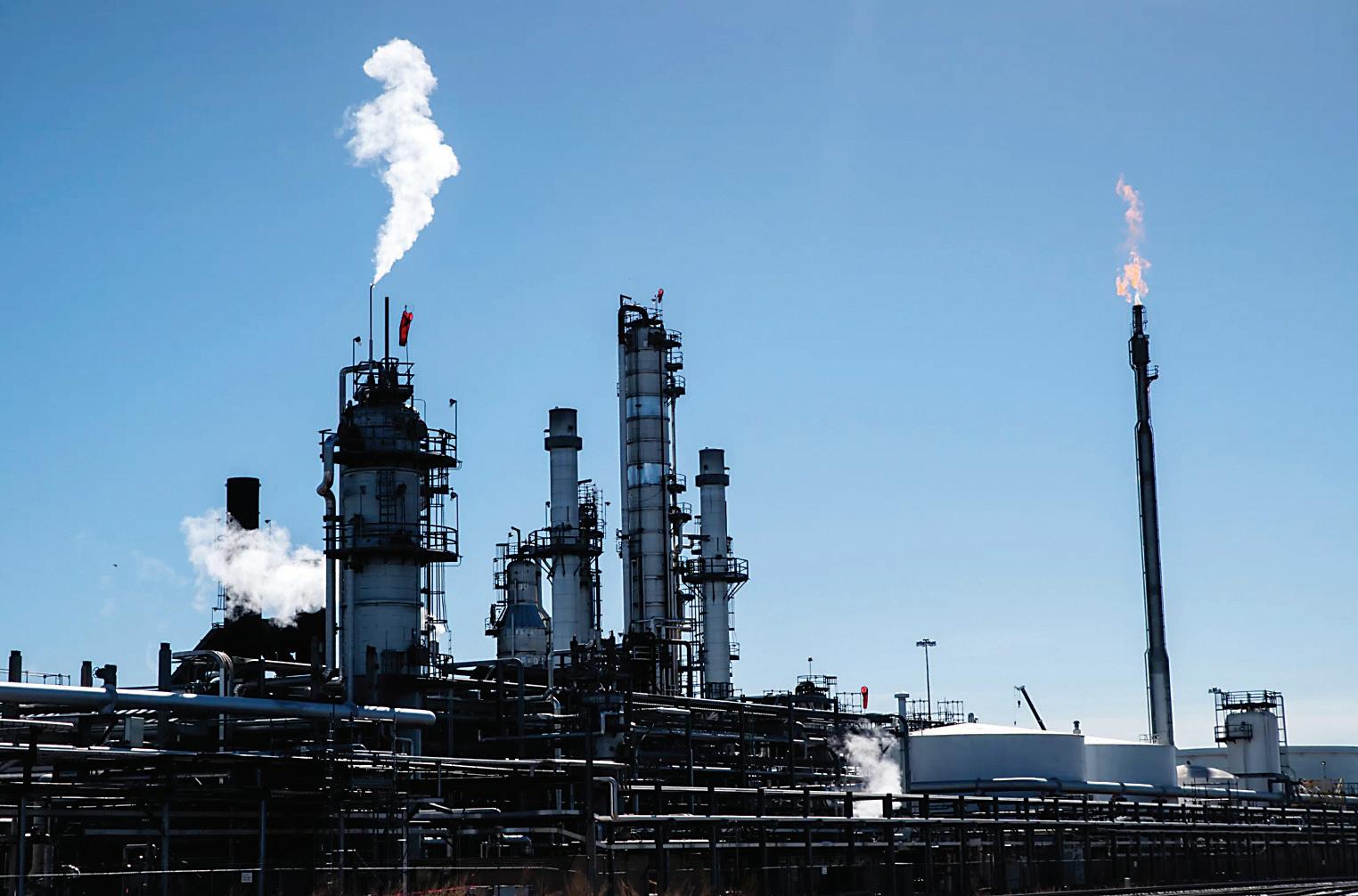
3 minute read
Suncor pollutes into nearby neighborhoods more often than similar facilities
BY MICHAEL BOOTH THE COLORADO SUN
e Colorado regional o ce of the EPA vowed tougher enforcement action against Suncor in Commerce City, issuing a report showing the re nery releases air pollutants into nearby neighborhoods more often than many similar facilities around the U.S.
Suncor logged more excess releases of sulfur dioxide-laden tail gas than any of 11 comparable re neries from 2016 to 2020, according to the Region 8 EPA study. Sulfur in tail gas is meant to be recovered to cycle back into the re ning process to avoid potentially toxic emissions.
Suncor’s Commerce City re nery also had the second-highest number of excess hydrogen sul de releases, or acid gas, among the same group of re neries, according to the EPA analysis, which was conducted with the Colorado Department of Public Health and Environment using federal recovery act funds.
In another tracked category, hydrocarbon aring, Suncor was in the middle of incidents recorded from the 12 total re neries, the EPA said. e analysis by a third-party engineer said Suncor’s Commerce City facility may be producing more air quality incidents because of faulty electrical equipment, lack of preventative maintenance, and not testing or inspecting other control systems adequately. e state health department, which reached a large settlement with Suncor over past emissions incidents and failures, also said the new study would result in steppedup enforcement for the facility under increasing pressure from neighbors and local elected o cials.

“We will use this information and other targeting tools to focus our e orts for future inspections and enforcement,” said Region 8 EPA Administrator KC Becker, a former Democratic Speaker of the House at the Colorado legislature.

“We anticipate the ndings will result in direct actions for Suncor to make improvements,” said Trisha Oeth, the CDPHE’s director of environmental health and protection.
Suncor did not respond to messages seeking comment this week.
Clean air advocates said state and federal o cials have plenty of information, and now must toughen their responses to Suncor’s ongoing air pollution incidents and applications for permit renewals.
“We have known Suncor has been a bad actor for years,” said Ean Tafoya, Colorado director of GreenLatinos. “It’s time to plan the just transition, including the retirement and remediation of Suncor. Our leaders have had the data. Now they have more. Will they act?” e EPA has said it will change policies and permitting to pursue environmental justice for the neighbors of frequent polluters. Commerce City and north Denver neighborhoods surrounding Suncor have lower income, larger minority populations and higher rates of asthma and other health problems related to pollution than other Denver communities.
Suncor is the only petroleum re nery in Colorado, producing gasoline for cars and aviation fuel for Denver International Airport. e re nery released potentially dangerous sulfur dioxide and hydrogen sul de into the surrounding neighborhood in late April, the second incident that month, and state health o cials warned the emissions could exceed permitted levels throughout that day.
In March 2020, Suncor agreed to pay $9 million to settle air quality violations at Commerce City dating to 2017, including one in 2019 that blanketed adjacent neighborhoods in an ashy substance. It was the largest penalty Colorado Department of e elevated discharges came as state clean water o cials are struggling to complete revisions to Suncor’s water out ow pollution permits that were rst opened to public comments more than 18 months ago. Colorado o cials noted then that they had included PFAS limits for the rst time in a draft of the revised permit. PFAS is an abbreviation for per uoroalkyl and poly uoroalkyl substances, a group of potentially harmful chemicals used as waterproo ng in thousands of goods from stain resistant carpet to rain gear to re ghting foam. e state health department’s water quality divisions have acted quickly recently to address potential pollution in runo from Suncor’s operations, Tafoya said. e air pollution division should use the study and other information to increase enforcement as well, he said. Various health divisions at the state should consider Suncor’s cumulative violations across all agencies. is story is from e Colorado Sun, a journalist-owned news outlet based in Denver and covering the state. For more, and to support e Colorado Sun, visit coloradosun.com. e Colorado Sun is a partner in the Colorado News Conservancy, owner of Colorado Community Media.
Public Health and Environment had ever levied from a single facility to resolve air pollution violations. Water quality advocates also monitor leaks of PFAS “forever chemicals” and benzene into waters around Suncor.
Discharges of toxic “forever chemical” PFAS into Sand Creek and the South Platte River by Suncor’s Commerce City re nery spiked to thousands of times the EPA’s revised drinking water guidelines for three months starting in November, according to lings with state regulators.
“At the end of the day, we need CDPHE to take the lead,” Tafoya said.








